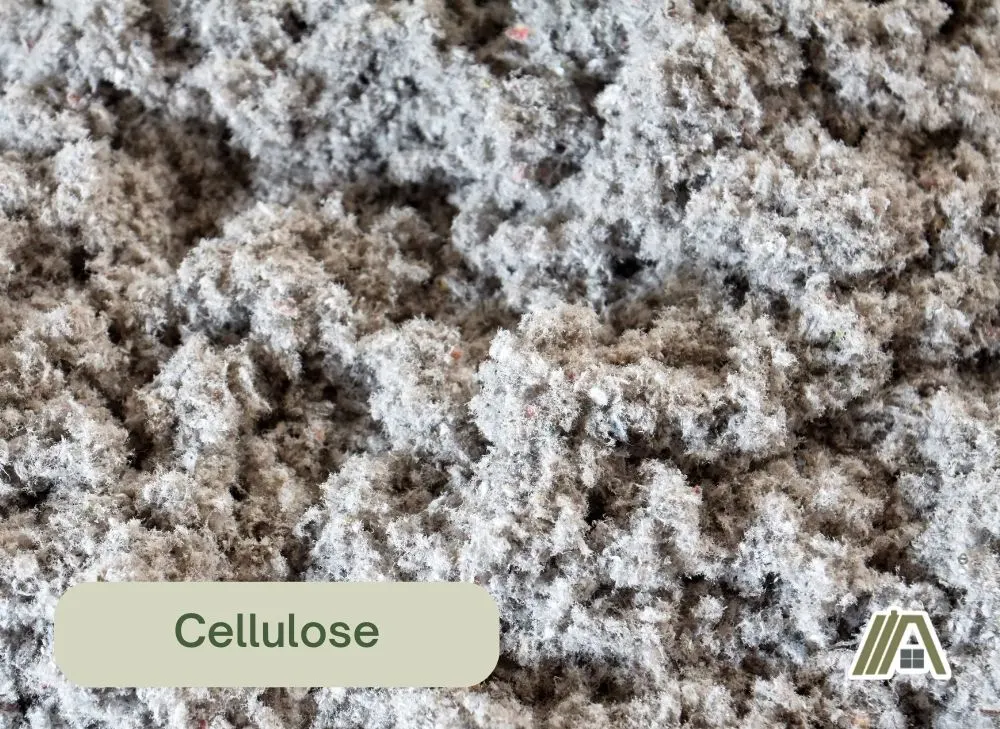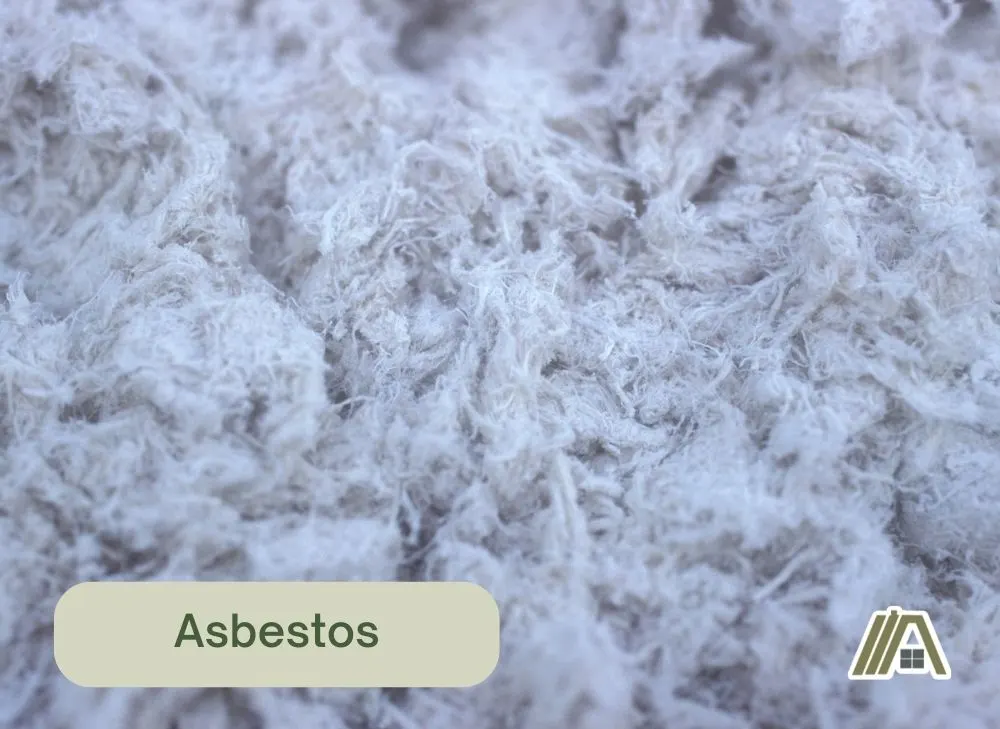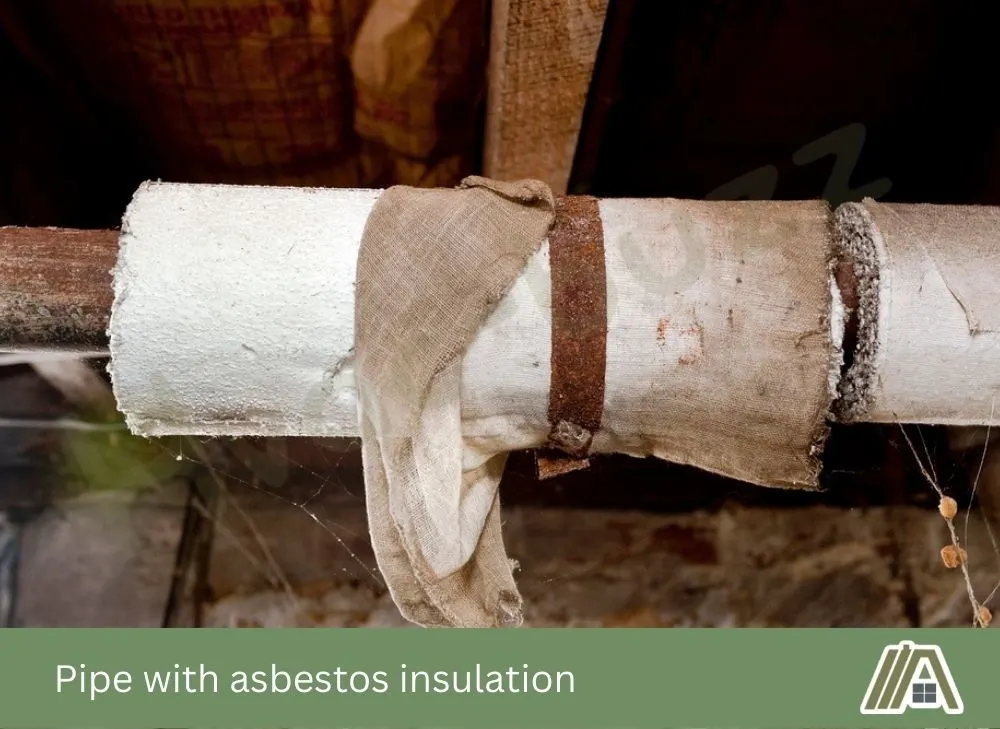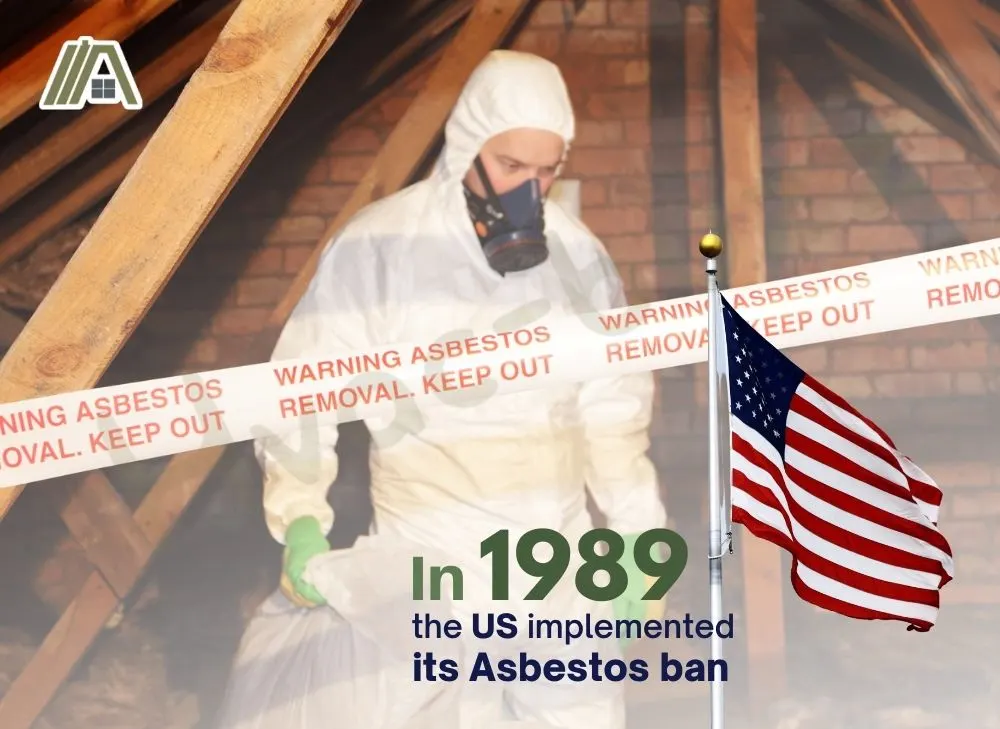When making home improvements, sometimes you must cut through your insulation to reach parts of your house. Unfortunately, doing this carelessly can lead to severe health issues if your insulation is old and contains asbestos.
Cellulose is one of the insulation materials that replaced asbestos once the toxic potential of asbestos was discovered. So, let’s look at how to distinguish between these so that you don’t have to stress about what’s in your attic and walls.

The easiest way to distinguish between cellulose and asbestos insulation is to look at the texture. Cellulose is made from recycled paper and looks like non-uniform, short, flat pieces. Asbestos is a naturally-occurring fiber that is uniformly long and thin.
Characteristics of Cellulose Insulation
| Material composition | Recycled paper |
| Color | Gray with flecks of color |
| Texture | The individual pieces are non-uniform, short, flat, and have a near 1:1 ratio of width to length. |
| Form | Loose “fluff” or batting |
| Potential locations | In existing enclosed walls, unfinished attic walls, new open walls |

Characteristics of Asbestos Insulation
| Material composition | Natural mineral fibers |
| Color | White, brown, or blue |
| Texture | The individual pieces are thin, long, and relatively uniform in size. |
| Form | Loose “fluff” or batting |
| Potential locations | In vinyl floor tiles, surrounding pipes, unfinished attic walls, existing enclosed walls |

Easiest Way to Tell Cellulose From Asbestos
The texture of the two insulation materials is what most easily distinguishes cellulose insulation from asbestos insulation.
Cellulose insulation looks like newspaper that has been soaked, shredded, and dried. This is quite different from asbestos, which looks like hairs, threads, or soft needles.
Precautions
This method of differentiating requires you to get up close to the insulation. In case it is asbestos, you should be properly prepared as asbestos can cause severe lung disease and cancer.
Proper protection measures include:
- Wearing a proper respirator (fiber-safe).
- Wearing a disposable covering for your entire body, including gloves.
- Wearing goggles.
- Looking at the insulation without touching it (asbestos is friable).
If inspection of your insulation leads you to think that it truly is made from asbestos, then you need to dispose of your disposable items immediately (don’t walk through the house) and wash the respirator (if it’s not the disposable kind).
What About Using the Color?
Color can be used to differentiate between cellulose and asbestos. However, this is a less reliable method.
Typically, cellulose insulation will be gray in color. It might also contain flecks of color. It’s made from recycled paper, so imagine taking a magazine with all its colors and creating a mulch-like material. Most of the colors will blend into the inevitable gray, but some true colors will remain.
On the other hand, asbestos insulation can be white, brown, or even blue, although this last one is not very common.
While it may be easy to differentiate based on color if the insulation was brand new, it is more likely to be old (otherwise, you could be certain it is not asbestos because of the ban). Old insulation can undergo color changes.
Dirty white asbestos insulation may appear gray, like cellulose insulation. You could unearth some white asbestos by digging deeper into the material. However, at this point, you will also have just sent thousands of fibers into the air, and if it is asbestos, this is a dangerous situation.

As another example, blue asbestos insulation is typically very easy to spot because of how unique it is. However, if it is under bad lighting, it is possible for it to appear gray.
Dirty cellulose insulation could appear brown like asbestos. While it is unlikely that you will reach the point of replacing all your insulation for no reason, you will definitely end up with unnecessary costs as you hire someone to test for asbestos.
It has to be confirmed because if it is asbestos, then it needs to be removed following a strict protocol.
Most Definitive Method of Differentiation
The safest and most accurate method of differentiating asbestos from cellulose insulation would be to get it tested professionally.
If you live in the United States, there are multiple labs in every state that are willing to test your insulation.
When signing up to get your insulation tested, you will oftentimes get the option between onsite testing, where the lab takes the sample themselves, or offsite testing, where you take a sample yourself and send it to the lab.
While it can be more expensive, we typically recommend that you sign up for onsight testing. Collecting the sample yourself can loosen asbestos fibers, making them airborne. Therefore, it is safer for everybody if you have a trained professional collect the sample.
While it varies from lab to lab, you can typically expect results within one to two weeks after the sample reaches the lab. If necessary, some labs may provide priority testing, which significantly decreases the time you need to wait.
Modern Insulation Will Not Be Asbestos
Another good indicator of the type of insulation you have is the date that it was installed.
In the past, asbestos was frequently used because it acted as an effective insulator. It was discovered much later that it was extremely dangerous to people (the pathology takes years to appear). Once the toxicity was discovered, however, its use in construction was banned.
The ban differs from country to country, but in 1989 the US implemented its Asbestos ban. This meant that new asbestos products, such as insulation were banned from being created.

So, if your house was built after about 2005, it is extremely unlikely that it contains asbestos.
If your house was built or renovated during the 70s and 80s, it is very possible that it contains asbestos. In addition, insulation installed in the 90s could also be made from asbestos because it was a phase-out ban.
Can Cellulose Insulation Contain Asbestos?
While cellulose insulation itself does not contain asbestos, it is still important to be cautious while dealing with your insulation.
Older homes may have had some of the insulation replaced as part of general repairs and maintenance. However, some of the insulation may be the original materials, which can be asbestos.
For instance, it is possible to have cellulose insulation in your walls while having asbestos surrounding your pipes or in your roof.
Therefore, it is important to check and identify any insulation you are working with individually to prevent any toxins from becoming airborne.
Sources
https://www.thespruce.com/how-to-identify-dangerous-asbestos-insulation-4119906
https://www.theasbestosinstitute.com/2020/06/02/identifying-asbestos-insulation/
